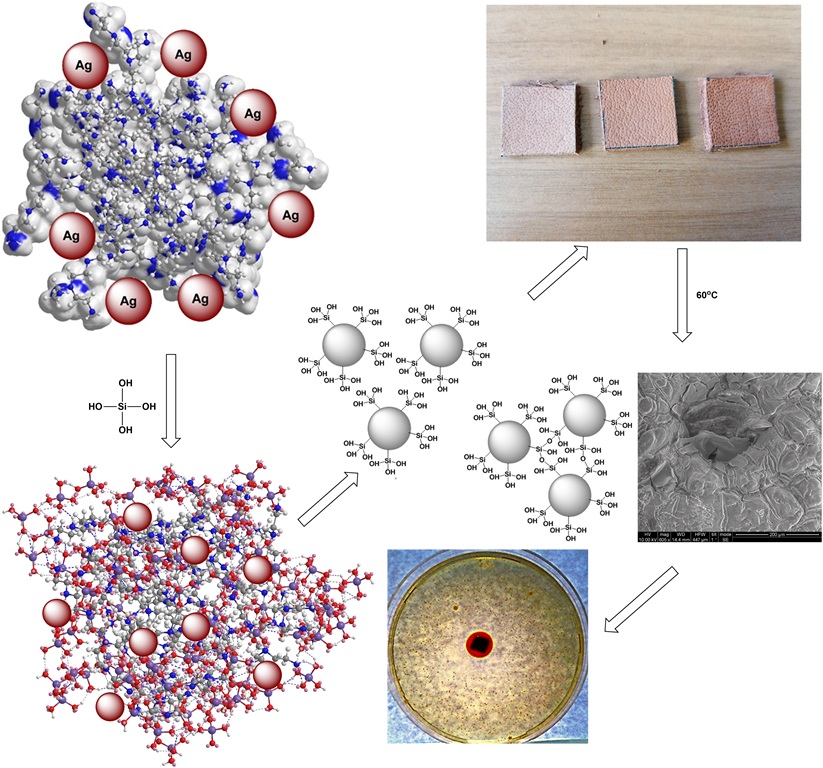Hybrid organic-inorganic (dendritic polymer-silica) xerogels containing silver nanoparticles (Ag-Nps) were developed as antibacterial leather coatings. The preparation method is environmentally friendly, based on two biomimetic reactions. Silica gelation and spontaneous (Ag-Np) formation were both mediated by hyperbranched poly (ethylene imine) (PEI) scaffolds of variable Mw (2000-750000). The formation of precursor hydrogels was monitored by dynamic light scattering (DLS). The chemical composition of the xerogels was assessed by Infra-Red Spectroscopy (IR) and Energy-dispersive X-ray spectroscopy (EDS) while the uniformity of the coatings was established by scanning electron microscopy (SEM). Release properties of coated leather samples and overall behaviour in water in comparison to untreated analogs were investigated by UV-Vis spectroscopy. Antibacterial activity was tested towards Escherichia coli, Pseudomonas aeruginosa, and Staphylococcus aureus, and antibiofilm properties against Staphylococcus aureus, Staphylococcus epidermidis, Escherichia coli, Acinetobacter baumannii, Enterococcus faecalis while SARS-Cov-2 clinical isolate was employed for the first estimation of their antiviral potential. Toxicity was evaluated using the Jurkat E6.1-cell line. Finally, water contact angle measurements were implemented to determine the enhancement of the leather surface hydrophilicity caused by these composite layers. The final advanced products are intended for use in medical applications.

